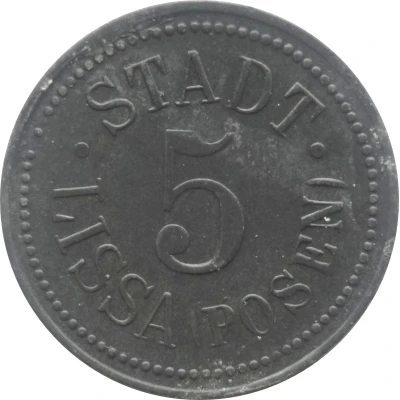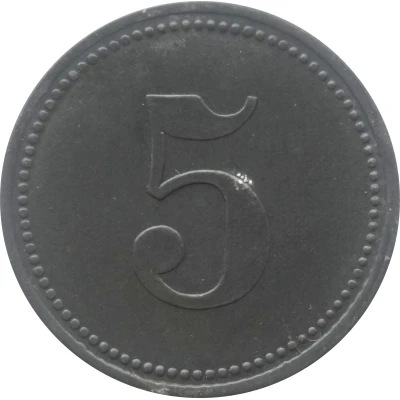


© Willem63 (CC BY-NC-SA)
5 Pfennigs - Lissa ND
| Zinc | 1.6 g | 19.9 mm |
| Issuer | City of Lissa (Posen) (Prussian province of Posen) |
|---|---|
| Type | Standard circulation coin |
| Value | 5 Pfennigs (5 Pfennige) (0.05) |
| Currency | Mark (1914-1924) |
| Composition | Zinc |
| Weight | 1.6 g |
| Diameter | 19.9 mm |
| Thickness | 1.0 mm |
| Shape | Round |
| Technique | Milled |
| Orientation | Medal alignment ↑↑ |
| Demonetized | Yes |
| Updated | 2024-10-04 |
| Numista | N#345342 |
|---|---|
| Rarity index | 95% |
Reverse
Pearl rim, with denomination centered
Script: Latin
Lettering: 5
Edge
Plain
Interesting fact
The 5 Pfennigs coin from Lissa (Posen) is interesting because it was minted during a time of great change in the region. The Prussian province of Posen, where Lissa is located, was annexed by Germany in 1871 and became a key region in the German Empire. The coin's mintage period, from 1873 to 1918, spans a time of rapid industrialization and economic growth in Germany, which is reflected in the coin's design and composition. The use of zinc as the material for the coin was a cost-saving measure, as it was cheaper than other metals, and it was a common practice during this time period. Despite its humble origins, the 5 Pfennigs coin from Lissa (Posen) is a fascinating piece of history that provides a glimpse into the economic and political changes that were taking place in Germany during this time.